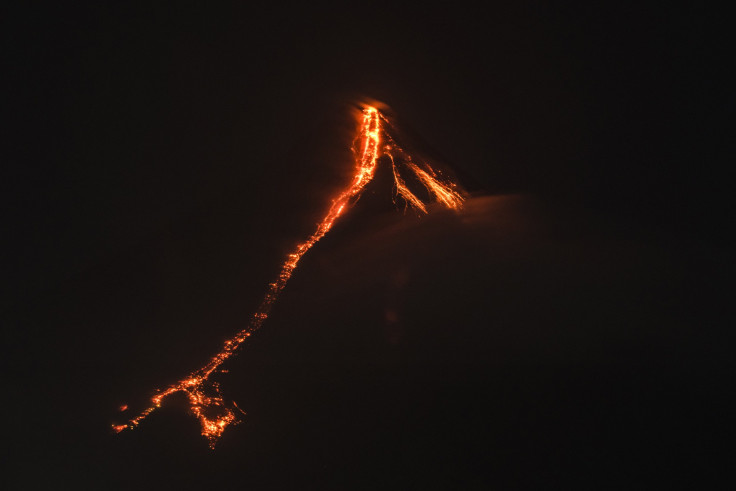Mayon Volcano Update: Eruption Spews Massive Ash Cloud, Lava Fountain [Photos, Videos]
Mayon Volcano in the Philippines erupted in a massive ash cloud Monday afternoon local time, prompting the threat associated with the deadly volcano to be raised from Level 3 to Level 4 by the Philippine Institute of Volcanology and Seismology (PHIVLOCS). Effectively, that extends the danger zone to a minimum radius of 8 kilometers around the volcano, and it also means a hazardous eruption is possible within the next few days.
BREAKING: Phivolcs declare Alert Level 4 over Mayon Volcano, says this is already a hazardous eruption | via @aaronrecuenco pic.twitter.com/No4IbCNkvV
— Manila Bulletin News (@manilabulletin) January 22, 2018
The ash column over the volcano was almost 10 kilometers high, and was accompanied by some pyroclastic flow, which contain hot gas and tephra, or fragmented volcanic material. The eruption of steam and ash, as opposed to lava, is called a phreatic eruption.

Locals living in nearby areas immediately shared photographs and videos of the eruption on the internet.
Just an update..
— Angeline Pielago🌿 (@anjiebrixx) January 22, 2018
Mayon Volcano
Photo taken.12218.12.30am
15 km Distance
Copr fr. facebook: Endz Tianco pic.twitter.com/3w6EXSJrwT
Mayon Volcano emitting steam, ash cloud engulfing the volcano
— Angeline Pielago🌿 (@anjiebrixx) January 22, 2018
ATM pic.twitter.com/tDkkqsenDk
Aktibidad ng Mayon sa mga oras @dzbb pic.twitter.com/A28czxOJpn
— Allan Gatus (@allangatus) January 22, 2018
Keep safe mga albayano's. Sumabog na si Mayon. pic.twitter.com/qHXo43DScS
— ℘ơƖą (@momsh_pola) January 22, 2018
at the moment #Mayon pic.twitter.com/edIoQsTHYy
— 🌹 (@ayekiyeki) January 22, 2018
Mayon Volcano Eruption pic.twitter.com/b28ZQHEAFK
— Sinbad (@MisterSinBad) January 22, 2018
Oh God, Mayon just let out a big one!!! pic.twitter.com/RQ5Ee2DeW0
— Rands Lorayes 🇵🇭 (@rmlorayes) January 22, 2018
The eruption led to the cancellation of classes in the entire province, ordered by the governor.
Earlier in the day and in the intervening night between Sunday and Monday, the volcano was also spewing out lava. Lava was flowing down the mountain slopes in three different flows, two of which formed in the last 24 hours. The longest flow was over 3 kilometers long when PHIVLOCS issued a bulletin at 8 a.m. Monday (7 p.m. EST Sunday). There were two episodes of lava fountaining also through the night.
Lava fountaining from #Mayon Volcano crater at 10:45 PST 21 January 2018. (Photo taken from Mayon Volcano Observatory, Lignon Hill, Legazpi City, Albay) via @phivolcs_dost Facebook page pic.twitter.com/6L7mDHV2tO
— Dr Janine Krippner (@janinekrippner) January 22, 2018
Mayon is the most active volcano in the Philippines, which, like many other countries in the region, is home to a large number of volcanoes. In the past 40 years or so, about 100 people have been killed due to Mayon’s eruptions, but over 1,000 have died due to indirect consequences from the volcano’s activity.
© Copyright IBTimes 2024. All rights reserved.











